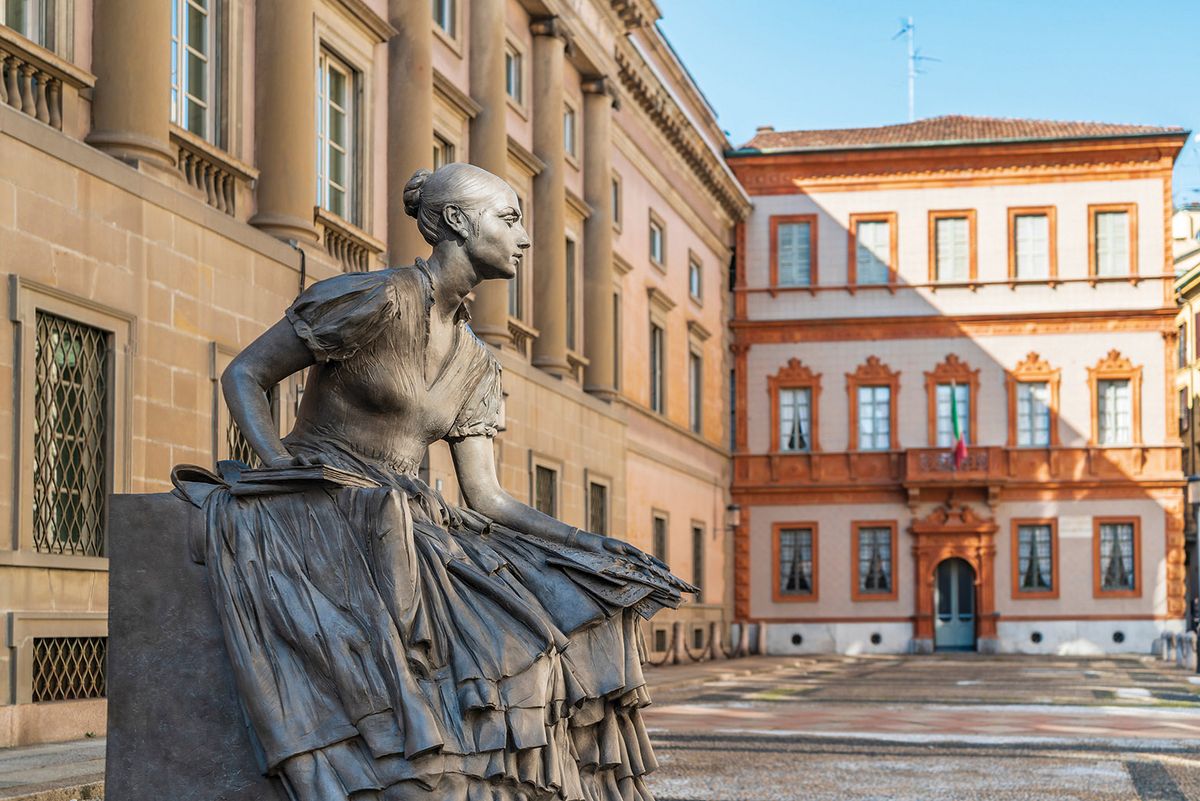When it comes to honouring historical figures in squares and parks across Italy’s towns and cities, there is little space for women. That is the verdict of two recent Italian-language books on the country’s statue gender bias. Women are under-represented as well as objectified, the books claim, with many recent statues of women being sexualised stereotypes that have drawn widespread condemnation.
Released last year, Comunque nude (nude in any case) is curated by the heritage association Mi Riconosci, and features 11 essays exploring an array of themes relating to how women are represented in statues. Le statue giuste (the right statues) by Tomaso Montanari, published in January, considers the historical value of controversial statues, and whether or not they should be removed.
The picture that emerges from both is of inadequate public spaces that reinforce the sexual objectification of women, in a country where 64 females were killed by their partners or ex-partners last year.
“What should a girl think today, walking around her city? What does the [Italian] Republic expect of her, what models does it offer her, what idea of society does it propose to her?” writes Montanari. “Do young Italian males not risk having [...] yet another confirmation that they are the masters of history through their gender right?”
The books followed a survey of statues of female figures conducted by Mi Riconosci in 2021 and 2022, at a time when a debate about colonial statues was raging in the UK. Excluding representations of Virgin Marys and allegorical and mythological figures, to focus on representations of real-life women, the association plotted 171 statues on an interactive map. Citing the survey, Montanari notes that Milan had just one statue of a woman at the time, compared with 125 men, while the busts of Risorgimento-era heroes honoured on the Janiculum Hill in Rome include one woman and 228 men.
Mi Riconosci subsequently extended its survey, bringing the total number of logged statues of women in Italy to 245—a figure the association believes is “very close” to the actual number, Rosanna Carrieri, Mi Riconosci’s president, tells The Art Newspaper. In addition to the numbers, Comunque nude also aims to highlight the circumstances in which the statues were conceived. Women often played no role in commissioning or creating the works, Carrieri explains, with “90% of the statues made by men”.
Numerous statues inaugurated during the 21st century have sparked controversy. Commissioned by Italy’s Marche region as a symbol against violence towards women, Violata (2013) by Floriana Ippoliti in Ancona shows a turquoise-skinned woman wrapped in rags, her breasts and buttocks exposed. La Spigolatrice di Sapri (2021) by Emanuele Stifano, in Sapri, near Salerno, is a tribute to the eponymous 19th-century poem by Luigi Mercantini. It shows a scantily clad woman in a wafer-thin dress clinging to her voluptuous glutes.
Another sculpture, on a fountain inaugurated in Acquapendente, near Viterbo, in 2003, is dedicated to Ilaria Alpi and Maria Grazia Cutuli, female journalists who were killed respectively in Somalia, in 1994, and Afghanistan, in 2001. The women are portrayed as nude figures standing side by side on top of a water basin, clasping a suspended newspaper.
Some local authorities have attempted to redress the gender imbalance, with Dario Nardella, mayor of Florence, announcing in 2021 that five new statues of women would be put up around the city. Similar steps have been taken in other parts of the world, with the Danish government pledging in March to correct a gender imbalance among the country’s statues by spending 50m Danish kroner (£5.7m) and setting up a committee for selecting which women should be commemorated.
Controversy in the community
In Milan in April this year, a five-person expert commission appointed by the city council unanimously voted against placing a bronze statue by the late female artist Vera Omodeo of a woman breast-feeding her child in a well-known square, finding that the work did not embody values that are “universally shared by all citizens”. Giuseppe Sala, the left-wing mayor, said he disagreed and would ask the commission to re-examine their decision. Carrieri said that simply inserting statues of women into urban areas is not the solution. Instead, authorities should think more carefully about how women are represented. While Sala had set a worrying precedent by undermining the view of an official commission, she said, the main problem was how the statue portrayed femininity. “This semi-nude, very young woman is associated with the not-very ground-breaking notion of motherhood.”
Promoting community participation when designing statues would help ensure women are more appropriately represented, Carrieri suggested. The Monumento alle Cadute partigiane, inaugurated in Bologna in 1975, presents a virtuous example of how this can be done, she added. The monument honours 128 women who were killed during the Second World War, with bricks inscribed with their names inserted into a two-metre-high frescoed wall. Perishable materials were chosen so that the monument would have to be renewed over time.
Most importantly, schoolchildren were involved in the process, making papier-mâché statues of the fallen women that form part of the monument. “Citizens who live in places often reject monuments that are made for them,” Carrieri said. “Involving the community will help ensure statues are accepted and loved,” she concluded.


